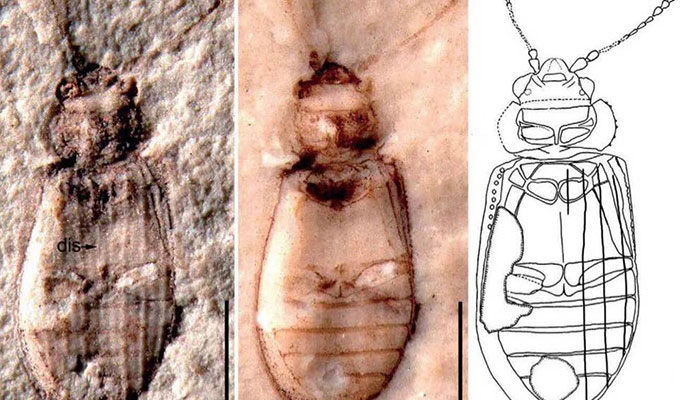Nanjing’s Institute of Geology and Paleontology is back in the headlines, with its research that puts the fossil record of beetles back by more than 150 million years.
After more than 2 years of research, Dr. Cai Chenyang, of the Nanjing Institute of Geology and Paleontology of Chinese Academy of Sciences and his PhD student Huang Diying, revealed the secrets of a group of ancient insects that date back to mid-Cretaceous Burmese amber, According to Hu Yumei, writing for Contemporary Express.
As published in the Bulletin of the Natural History Museum, London (Geology), “A review of the history, geology and age of Burmese amber (Burmite)” by Zherikhin, V.V. & Ross, Andrew. (2000) reveals that mid-Cretaceous Burmese amber has been known for at least 2,000 years in Southeast Asia, where it was and is used as material for jewellery. Burmite has also long been traded with China.
Cai told reporters from Xinhua that in the last 2 years, he, along with and his mentor, Huang, and six overseas collaborators from the Middle Jurassic Tiger Valley biota in the Daohugou area of Ningcheng County, Inner Mongolia, studied the secrets of ancient insects from the fossiles found in the Ningcheng County (about 165 million years ago), early Cretaceous Rehe Biota (about 125 million years ago), and the Eocene strata in southern France.
The experts were surprised to discover many “mysterious” beetle fossils, including the most primitive. At only 3 mm in size, the tiny beetle belongs to a new genus, putting the fossil record of the section back approximately 165 million years. Cai Chenyang said that through the identification of fossils, this pseudo-Guogong worm fossil can be classified into the existing Peltasticinae subfamily, which is closer to the existing Peltastica genus. The pseudo-Guo Gong worm, which is the most similar to it, now lives only in South America and became extinct in China a long time ago.
Experts also discovered a large-eyed stag beetle (the stag beetle) in the Eocene strata of southern France (40 million to 50 million years ago), which has a large compound eye like a fly with thousands of single eyes inside, providing powerful vision for a wider scope of activities.
The new findings come after last year’s tremendous discovery by Associate Professor Fu Qiang of the Institute concerning the oldest fossil record for flowering plants, on which he gave an exclusive interview with The Nanjinger.









